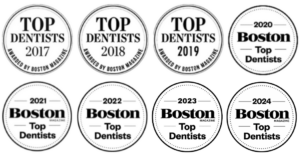Things to Know on Frenectomy: What and Why Is It Important
If you’ve ever looked inside your mouth, you may have been able to identify your teeth, tongue, and gums. However, other parts also play an essential role in your mouth, like the tissue that connects your tongue to your mouth.
For some people, this tissue can be stronger than usual, which can cause problems as they grow and develop. In these cases, a frenectomy (a procedure to remove the tissue) may be the answer.
Here are some details you need to know about frenectomy:
What is a Frenectomy?
A frenectomy is a surgical procedure that involves cutting or modifying the frenum, a piece of soft tissue that connects different parts of the mouth. This surgery is often performed on infants with lip or tongue ties.
A lingual frenectomy, which is a procedure that is typically performed on infants, can improve the range of motion in the tongue. This, in turn, can allow the child to eat, drink, and speak properly as they grow older.
Maxillary frenectomies are surgery that helps improve oral hygiene and prevents gum disease. The surgery also helps with facial expressions and speech.
What is the Process of Frenectomy?
Frenectomies are usually simple procedures performed by your doctor or dentist. However, in some cases, an oral surgeon or ENT specialist may be needed.
After the patient is given a numbing agent, the doctor or dentist proceeds to the next step. After numbing the area with a local anesthetic, the doctor or dentist uses a scalpel, surgical scissors, or a laser to make an incision in the tissue.
If the cut is severe, you may need stitches. Using a laser to cut the tissue is less risky and results in less blood loss. Another option is to use a cauterizing tool that will cut the tissue.
How Long is the Frenectomy Recovery Process?
Recovering from a frenectomy is usually easy since the procedure is straightforward. The doctor may prescribe antibiotics to prevent infection or complications. You should be able to return to your normal activities and eating habits within two to three days.
After a frenectomy, you should eat soft foods for a few days and avoid anything that could get stuck in the healing area. You may have discomfort, but it should be manageable with over-the-counter medication.
Do You Need a Frenectomy After Braces?
A frenectomy is a procedure that some people need as part of their orthodontic treatment. It helps to reposition the tongue or eliminate a gap between the front teeth. Your orthodontist may suggest a frenectomy after you have worn braces for a while to ensure that the teeth and jaw stay in the proper position.
How to Diagnose and Perform a Frenectomy?
Doctors, dentists, oral surgeons, and ENTs know how to safely and correctly cut a tongue frenulum, while at-home attempts can lead to infection and other complications.
The best people to identify tongue or lip ties are your doctor, pediatrician, or dentist. While it is a common condition in infants, they could have it without needing a frenectomy, so it’s crucial to consult a trained professional instead of diagnosing it yourself.
Conclusion
A frenectomy is usually a harmless procedure and can improve your oral hygiene and eating habits. This procedure may be necessary if you have trouble opening your mouth normally or if you cannot breathe properly. Frenectomies are even more crucial if you cannot suck properly, swallow properly, or suck on a nipple.
Ask your doctor to show you pictures of what they have done in the past, and be sure to have a frank discussion about the surgery. Your doctor may also be able to tell you if your frenum is too short or if you have a lip tie.
If this is the case, they may suggest that you go to an ENT specialist for a frenectomy. If you think that you have a tongue or lip tie, you can schedule an appointment with our cosmetic dentists in Lexington.



